Do you want to be a successful corporate entity in the real estate industry? If you want to have a bigger share of the market, it is important for…
continue readingOn the other hand, results from a separate study showed that a majority of the consumers opt for paper bills over digital ones (e.g., medical bills, property taxes, utility bills, and others). Weighing the pros and cons between paper and digital invoicing has become a challenge in businesses. Regardless of the invoicing method you prefer, though, knowing the basics of invoicing is essential in attaining a smooth-flowing transaction with your customers. Learn more about invoices as we walk you through the essentials of the document.
50+ Sample Invoice
-

Club Dues Invoice Template
download now -

Transportation Reimbursement Invoice
download now -
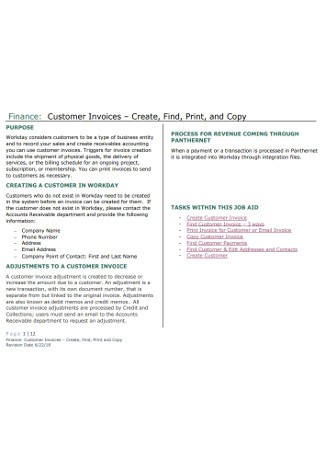
Sample Customer Invoice Template
download now -

Blank Invoice Template
download now -
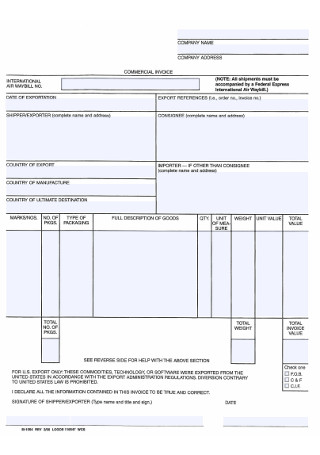
Commercial Invoice Template
download now -

Sales Invoice Template
download now -

Invoice Shipping Document
download now -

Contractor Agreement and Invoice
download now -

Itinerary Invoice
download now -

Custom Invoice Template
download now -

Vendors E-Invoice Interface
download now -
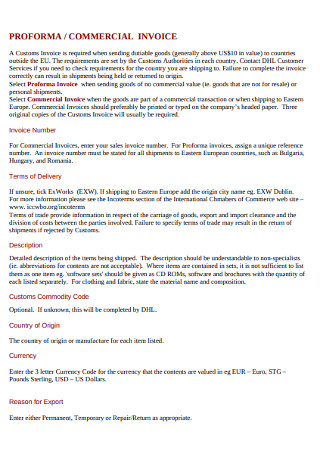
Proforma and Commercial Invoice
download now -

Tax Invoice
-

Facilitator Invoice Template
download now -

Commercial Invoice Form
download now -

Commercial Packing List Invoice
download now -

Commercial Invoice Checklist
download now -

Commercial Market Invoice
download now -

Commercial Company Invoice
download now -

Commercial Custom Declaration Invoice
download now -

Commercial Health and Safety Invoice
download now -
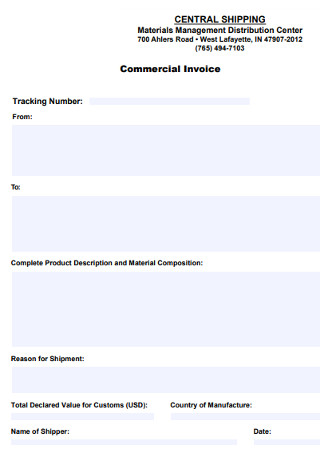
Commercial Materials Invoice
download now -

Final Invoice Certification
download now -

Invoice Schedule Formats
download now -

Basic Invoice
download now -

Formal Invoice
download now -

Invoice Processing Policy
download now -

Invoice Payment Form
download now -

Invoice Example
download now -

Company Invoice
download now -

Wine Invoice
download now -

Department External Invoice
download now -

Printable Invoice
download now -
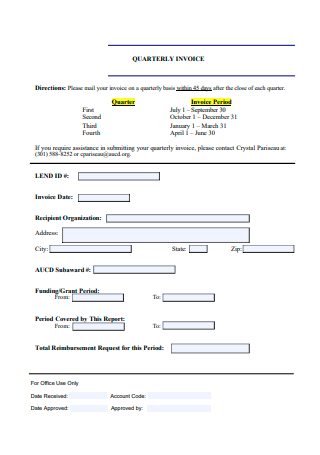
Quarterly Invoice
download now -

Non-Employee Invoice
download now -

External Invoice Procedure
download now -

Electronic Invoice For Services
download now -
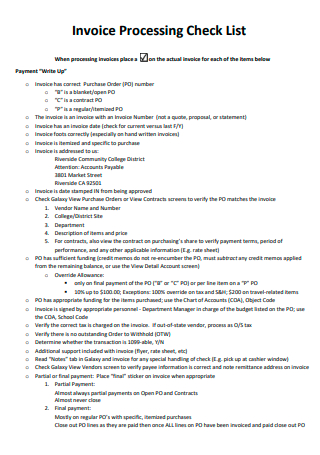
Invoice Processing Checklist
download now -

In Lieu of Invoice
download now -

Invoice in PDF
download now -

Service Invoice
download now -

Invoice Submission Form For Agencies
download now -

Sample Airport Planners Invoice
download now -

Vendor Invoice
download now -

Consultant Invoice
download now -

Commercial Invoice Processing Policy
download now -

Standard Commercial Invoice
download now -

Invoice Voucher
download now -

Billing Invoice
download now -

Sample Invoice in DOC
download now -

Billing Invoice Form Template
download now
What Is an Invoice?
An invoice is a document used in business processes which contains a list of products or services provided by a business. It also includes the agreed prices and quantity of each item. Usually, a seller or a service provider issues an invoice to a purchaser with the purpose of requesting the customers to pay for the goods or services their business supplied. One example of an invoice statement is a commercial invoice. It is a primary document required by customs in international trade or shipping which determines the true value of imported products. You will learn more about other types of invoices as you read this article.
Types of Invoices
The business industry consists of various sectors that make great efforts to ensure profitability. While some compete with each other to stay on top of their game, there are industries that depend on the other to foster development. Product sellers don’t just supply goods to the consumers, they also sell their products to other businesses who need these. On the other hand, service providers also cater to businesses as well as individual clients in the market. Whether it is a business-to-business or business-to-consumer transaction, it is crucial to have a document that keeps a record of the transaction that took place. One of which is an invoice. However, you should note that the invoicing requirements vary from one industry to the other. Here are the different types of invoices which serve different purposes to business owners.
Past Due Invoice: It is your right as an entrepreneur to request for payment after rendering a service or providing a product to a customer. In the event that they fail to pay you past the due date specified on the final invoice, it would be best to send a past due invoice to your client/s. This document will remind them to pay for the products or services they received. The information reflected on this invoice is similar to the final invoice. However, if you charge an extra fee for late payments, you should specify the amount in the document.Recurring Invoice: A business owner issues a recurring invoice on a regular basis for the ongoing products or services rendered to a customer. Usually, recurring invoices are used in memberships, subscriptions, and rentals. With this type of invoicing, customers are charged at a fixed rate per month until the agreed-upon termination or expiration date. You should also note that you first have to discuss with the customers regarding the payment arrangement before you issue a recurring invoice on a monthly basis.
How to Create an Effective Invoice
Invoices bear a great significance in business processes. Aside from keeping a record of transactions, sending an invoice help business owners get paid. According to an article from Entrepreneur published last 2016, the estimated amount of unpaid invoices across all small businesses in the United States soared up to $825 billion or about $84 000 per small business establishment. The numbers may have changed by now, still, it is a must for businesses to deal with this issue to maintain or increase their profitability. Requesting payments from customers starts with creating an effective invoice. Follow the steps provided below for an smooth-flowing document-making process.
Step 1: Determine the Purpose of your Document
As previously mentioned, there are different types of invoices that also serve various purposes to businesses. Therefore, before you launch a program or software, you first need to specify the purpose of your document. Knowing its purpose will help you determine what type of invoice you need to create. Although there is a standard invoice format, note that there are invoices that are specifically tailored to best fit your needs.
Step 2: Incorporate Brand Identity
In creating a business-related document, it would be of great help to incorporate your business’ branding into its design. Like a letter’s letterhead, attach your logo at the top portion of the invoice form. Then, insert relevant information about your business such as its name, address, contact number, and website URL (if applicable). You may also make use of your company’s signature color when creating the invoice. Doing so will help you advertise your business and increases company visibility. Apart from that, having your contact details in your invoice provides the customers an easier means to reach out to you whenever they have queries or if they wanted to do business with you.
Step 3: Know the Key Elements of an Invoice
Now that you have specified the type of invoice you will create based on its purpose, the next thing you will do is to know the key elements of the document. It is essential to have a full understanding of what you need to include in your invoice for it to fully serve its purpose. Usually, an invoice has the following sections: date issued, invoice number, names, address, contact details, item description, and terms of payment. After providing blank spaces for basic information such as the date, number, and names, create a table where you can write vital details about the transaction. Leave the first column of the table blank for the quantity of goods, next to it will be the item description, unit price, and total amount for the products and/or services rendered.
Step 4: Specify the Terms and Conditions
As stated above, one of the most important elements of an invoice is the terms and conditions of payment. It helps you avoid misunderstanding and disputes during unexpected circumstances. In this section, you have to specify the terms of sale, due date, available payment modes, warranty, return or exchange policy, and late payment penalties. Remember to be polite in writing the terms and conditions of the invoice. Although it won’t guarantee you that you’ll receive the payment that’s due to you, doing so will help establish a good customer interaction which can build a positive brand image.
Step 5: Observe Immediacy When Issuing an Invoice
After providing a product or service to the customer, don’t wait for days to pass before issuing an invoice. Make sure to send the document right away so the customers can settle the payment on time. Moreover, you should see to it that the information you input in the form is correct and complete for you to receive the right amount of payment. If you send the invoice using an online platform, check if you are sending the document to the right recipient.
The Dos and Don’ts of Invoicing
Along with running a business is managing the cash that flows into and out of your company. Having a positive cash flow is crucial regardless of the size of the enterprise you own. For this reason, you have to make sure that more finances are flowing into than out of your business. In relation to that, business owners should note that effective invoicing can positively affect the cash flow of their company. If you are experiencing invoicing struggles, we have listed down the dos and don’ts of invoicing which will help you get paid in an instant.
Dos
1. Do offer discounts.
It is not new for businesses to experience late invoice payments. As stated in an article from Export-Import Bank of the United States, late invoice payments reached up to 60%. On average, invoices are paid six days after the due date. Avoid this unfortunate fate by offering discounts to your clients. You can give discounts to them in return for paying the invoice before it’s due. Cutting the price or providing incentives to your customers will encourage them to pay on time, or better yet, pay ahead of time.
2. Do make good use of the invoice.
As discussed earlier, incorporating your business’ branding into your invoice’s design will help increase your company’s visibility. Apart from that, you should make use of colors and fonts which will best represent your business. Bear in mind that the formatting or overall appearance of your invoice will say a lot about your company. If it looks presentable, it will give a notion to the customers that the business you run is credible and established. Furthermore, you can also include your promotional materials, such as brochures or flyers when sending out the invoice.
3. Do discuss the payment terms.
Knowing the viewpoint of the customers about the terms and conditions is essential in most business processes. For this reason, you should also personally discuss the payment terms with your clients aside from writing the arrangement in your document. Both parties should come to terms regarding the payment before the transaction takes place. After discussing the terms and conditions with the customers, make sure to put the agreed-upon arrangement into writing and have it signed.
Don’ts
1. Don’t offer one payment option alone.
There are several factors that might lead to late invoice payments—one of which can be the limited payment methods the business offers. As a product seller or business provider, you should see to it that you provide the utmost convenience to your customers. This includes giving them various payment options so it will be easier for them to pay you. Here are some of the payment modes you can offer to your customers: cash, checks, credit cards, mobile payments, bank transfers, and direct deposit.
2. Don’t write lengthy terms and conditions.
The terms and conditions written on your invoice should be concise and clear. There is no need to write lengthy statements of the agreed-upon terms given that you’ve already discussed these with the clients. Moreover, you need to compose it in a way that is easily understandable for the clients. You should also keep in mind that politeness always pays off. So, you have to be courteous when demanding for payment—you can write a phrase like “please pay within 15 days”.
3. Don’t forget to follow-up.
Don’t leave your invoices unpaid. When you still haven’t received the payment days after the due date, it is your responsibility to follow it up so you get the right compensation. Also, you should know when is the right time to send an overdue notice to your clients. Even if it’s fine to give your customers ample time to pay the invoice, giving them too much time to pay (e.g., 45 days) would mean that it would take you too long to receive the payment.

